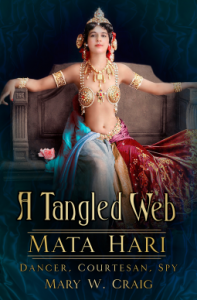Out Nov 1, 2017

Disclaimer: ARC via Netgalley
Perhaps the first thing one learns about Mara Hari is that she was dancer and a slut. Then, perhaps one learns she was a slut because she danced naked and slept with a great many men. Then one hears that she was spy and was shot for it. But the important thing that one is told is that she was very, very sexy. In fact, she seems to be the spy that gets remembered not so much because of the doubt of her guilt, but because she was a sexpot.
She also wasn’t a very good spy. She got caught after all.
Mary W. Craig’s new book tries to present a more nuanced picture of Mata Hari, or at least as much as one can giving the problem of sources.
Margrethe Zell was born in the Netherlands, where she lived until her marriage took her to the Dutch East Indies. Her early life, Craig points out, was nice until her father suffered a major loss in business. What then followed as an unclear life plan and, what today, we would consider at the very least statutory rape – an affair with an instructor. Craig’s details about Hari’s early life - her struggles after the family bankruptcy and her time spent with relatives are related in a matter of a fact way. There is pity in Craig’s writing, but Craig isn’t turning the biography into a more sinned against than sinning story. Hari isn’t portrayed as a victim, but as a woman who took control of her life.
Or if she is, she is doing it by taking a brutally honest about Mata Hari.
Nowhere is this more obviously in the discussion of Zell’s marriage with MacLeod. It is a marriage that produced two children, possibly infected Zell with an STD, and was abusive. While not excusing MacLeod’s behavior, Craig also places the man in context, in particular with his treatment of Hari after separation and divorce, noting that MacLeod’s actions had more to do with protecting his daughter than anything else.
Hari was no saint, and in addition to her sexual activities (less shocking today than when Hari lived), Craig does closely examine and places Hari’s dancing in the times. The discussion of whether Hari was lying or promoting a fantasy with her “Eastern” dancing. How much of her dancing was imply an illusion that everyone brought into, like the body stocking she wore? Craig can’t give a definite answer but she does truly address the issue, even reading books about Hari that were published during the height of her popularity.
Craig, in part, is hampered by the self-serving purpose of some her sources (and she is clear about this) as well as a lack of sources. Yet, despite these drawbacks, Craig does paint an interesting, more revealing portrait of a woman who is usually known simply for sex.








